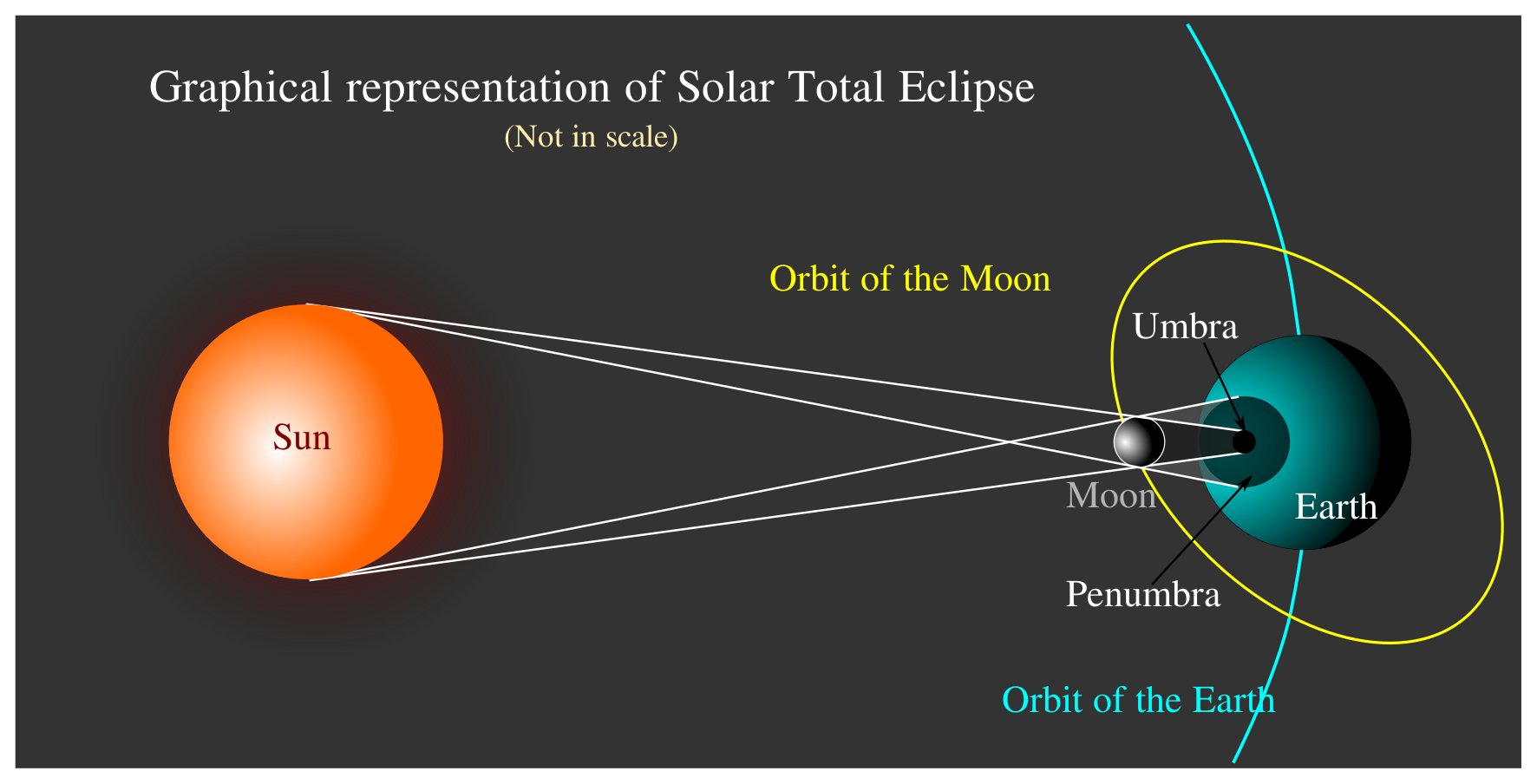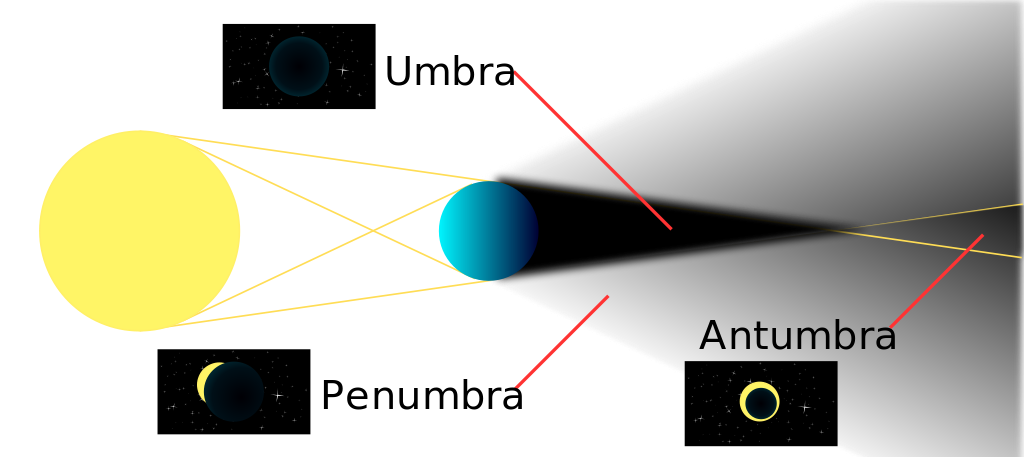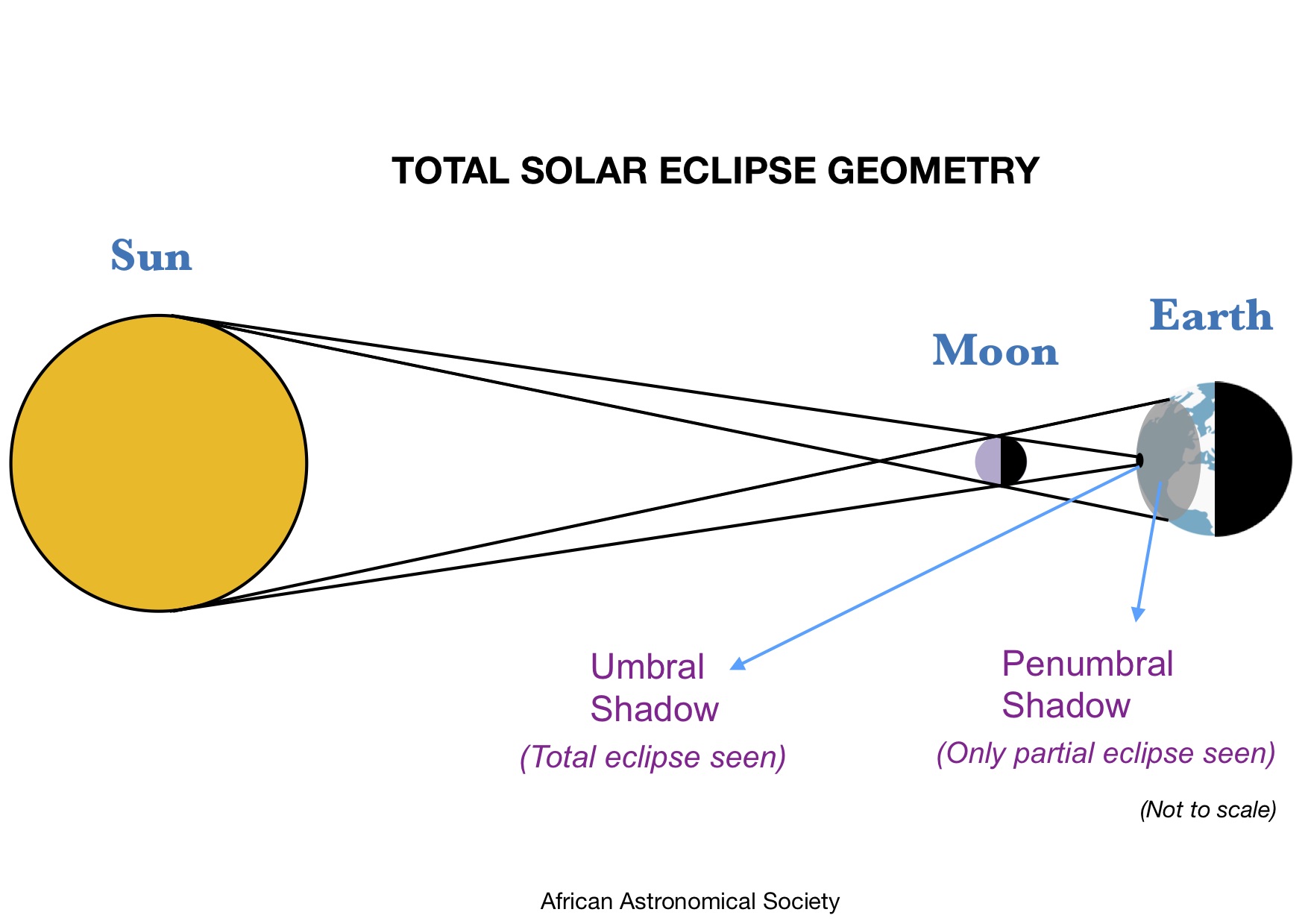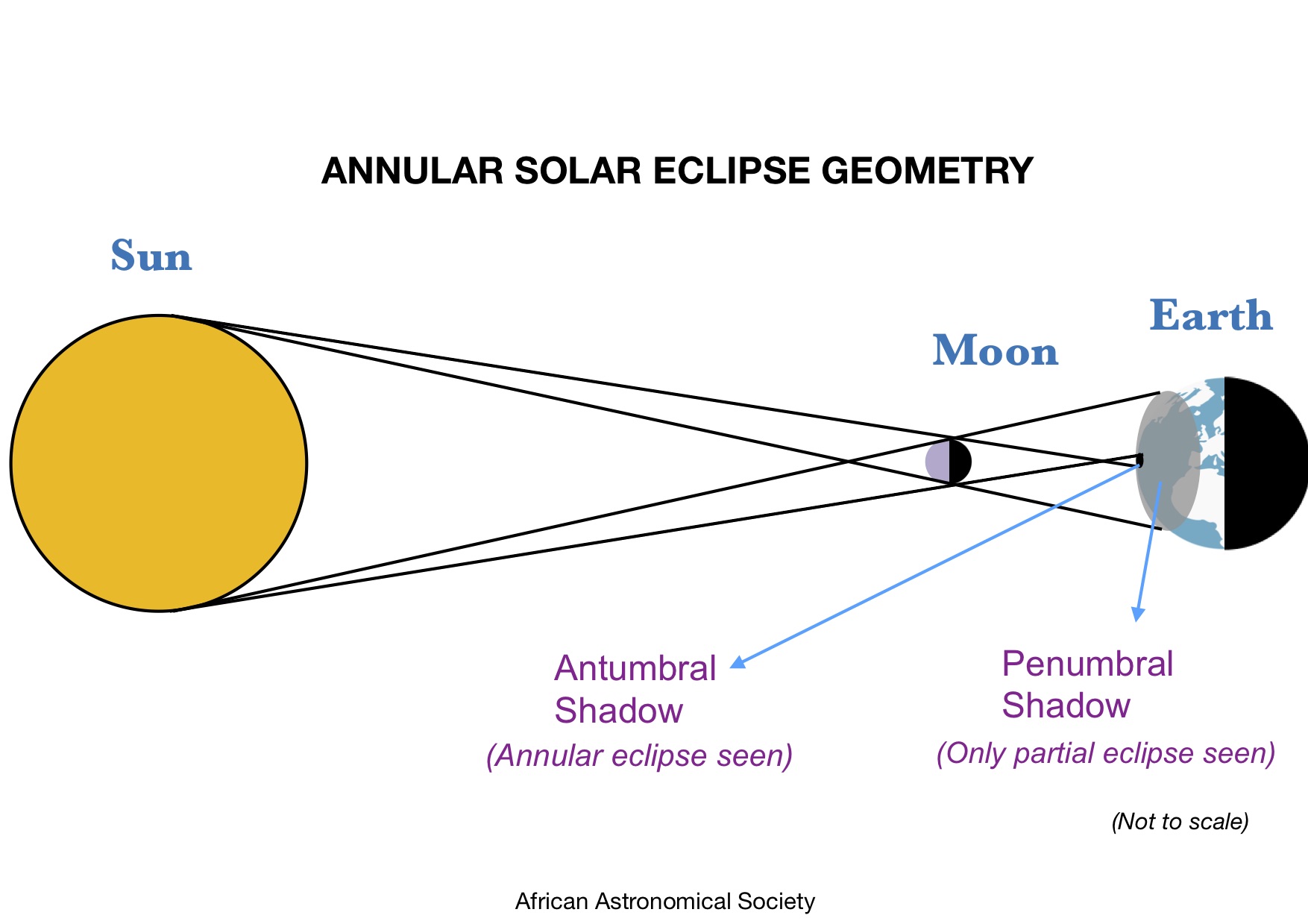AN INTRODUCTION TO SOLAR ECLIPSES
Eclipses are all about celestial shadows. The moon goes around the earth in little less than a month, and the moon and the earth together go around the sun once a year. Since the earth and the moon are illuminated by sunlight, the sun also continuously casts a shadow behind each of them. During their dance around each other, the moon sometimes comes in between the sun and the earth. The moon’s shadow then falls on a part of the earth and regions in this shadow will see the sun slowly being covered by the moon over a few hours time. We call this a solar eclipse. Similarly, when the shadow of the earth falls on the moon, we get a lunar eclipse. Since a solar eclipse happens when the moon comes in between us and the sun, this can occur only during a new moon. Similarly, a lunar eclipse can happen only during a full moon.

If you observe a solar eclipse using some safe method, what will you see? As the moon begins to move in front of the Sun, you will notice the moon covering a part of the sun, as if something took a bite out of it. In fact, many ancient cultures did interpret eclipses as events caused by some mythical creature eating the sun (or the moon) at this time. Though it looks like the sun and the moon are very close together, they just happen to be in front of each other, but still far apart. They too practice social distancing! Over the next few hours, more and more of the sun will get covered till mid-eclipse, and the reducing amount of sunlight in the daytime can be quite an experience. Subsequently, the moon will begin to leave the disc of the sun, and continue merrily on its way. While the ambient light dims as near maximum eclipse, birds will come back to their nests, seemingly confused. If you are in the path of totality, then the moon will completely cover the sun during mid-eclipse. For a few glorious minutes, you can see the corona, the sun’s atmosphere, shimmering in the daytime. Unfortunately, the eclipse on 21 June will not be a total solar eclipse, but more on that later.
What determines whether you will see a total eclipse or not? To understand this, we need to learn about the umbra, penumbra and the antumbra of a shadow. The umbra is the inner core of the shadow of total darkness and the penumbra is the less strong shadow surrounding the umbra. The antumbra is the extension of the umbra as you travel away from the source casting the shadow, in the same line.

The cones of the umbra and the penumbra sweep across space as the moon travels in its orbit. As it goes past the earth during an eclipse, places that the umbra passes over will experience totality during mid-eclipse. Places that the penumbra passes over will experience only a partial eclipse. The diameter of the moon’s umbra on earth can be around 100-250 km for different eclipses, whereas the diameter of the penumbra can be more than 6000 km.
From the pictures below, we can understand that if the moon were a bit farther away from the earth, then the antumbra will fall on the earth, instead of the umbra. People in the path of this antumbra will see an annular solar eclipse instead. The eclipse on 21 June will be such an annular solar eclipse. Does this mean that the moon would have moved closer to the sun? Yes, indeed. Let us now try to understand why.



